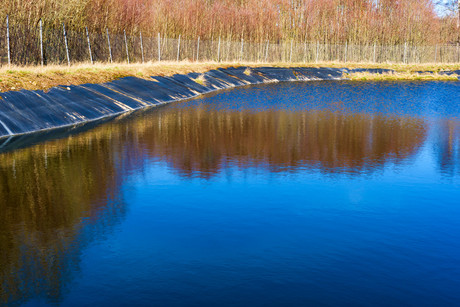Leachate — what is it and why is it a problem?

When you hear the word leachate, what comes to mind?
Many, perhaps, would imagine a small polluted stream of water. Others might immediately think of landfills and the problems caused by the unsustainable disposal of waste material for decades.
The latter, of course, is correct while the polluted stream may be true sometimes. Leachate is the term used for any liquid produced by the action of ‘leaching’. Leachate is the water that has percolated through any permeable material.
Government data suggests that there are around 500 officially registered landfill sites in Australia and although the number is declining, the average size of the landfill site is increasing. Approximately 75% of garbage in Australia goes to just 38 sites.
Thankfully, we are reducing our reliance on landfills, partly by recycling as much as we can and focusing more on the sustainable use of anaerobic digestion plants that are converting our waste to energy. We are also reducing the number of non-biodegradable products that we use. Coles and Woolworths implementing a ban on disposable plastic bags recently is one example of Australia’s commitment to protecting our environment.
Released in 2016, the second edition of the NSW Environmental Protection Authority’s ‘Environmental Guidelines: Solid waste landfills’ requires that (among many other regulations) all landfills are to have a leachate barrier to contain leachate and prevent the contamination of surface water and groundwater over the life of the landfill. However, even if all landfills met these requirements, leachate from old landfills still needs addressing as the problem lingers for many years.
And it is not only landfills that generate leachate. There are many other problems associated with contaminated land in general. There are numerous sites throughout Australia where developers need to overcome leachate problems caused by historical industrial activity. There are many infamous cases in Sydney alone, where over the last few decades we have had to deal with far more severe pollutants than those found in conventional landfill operations, and there will certainly be a lot more cases in future.
What are the options for handling leachate from landfill sites?
The options available include off-site disposal, discharge to sewers with or, possibly, without pre-treatment, or treatment on-site for environmental disposal or re-use. Off-site disposal is very uncommon due to prohibitive costs unless the landfill is very small.
Discharge to sewers may be possible, depending on the site location and infrastructure availability and capacity. The degree to which leachate has to be treated depends on local trade waste legislation.

Leachate from landfill sites contains a variety of different substances, although by far the most significant contaminant is ammonia. Ammonia and other forms of nitrogen occur naturally in the environment, but concentration levels in leachate are alarming. Decomposition of plant, animal and human waste produces ammonia and many household and industrial cleaning products, including disinfectants, also contain ammonia.
Ammonia levels for discharge to sewers vary across Australia. For example, Sydney Water requires an ammonia concentration of less than 100 mg/L for sewer discharge while Queensland Urban Utilities set 200 mg/L as a more lenient upper limit. However, with ammonia often present in concentrations in excess of 1000 mg/L in landfill leachate, discharging leachate to sewers will almost certainly require some form of pre-treatment anywhere in Australia.
Naturally, discharging into the environment has far more stringent requirements. Due to ammonia’s environmental effects, discharge concentrations are very low. In fact, 0.3 mg/L for fresh water and 0.5 mg/L for marine waters are the trigger levels established by the Australian and New Zealand Environment and Conservation Council (ANZECC).
What leachate treatment methods are available?
Ammonia concentrations in leachate can be reduced by air stripping, chemical treatment or biological processes.
Air stripping is not common practice as stripping towers are expensive with high operating costs due to high alkalinity, strong buffering and the need for large volumes of alkali to enable the process to work. Air stripping also releases large quantities of ammonia into the air resulting in air pollution, which is another major concern.
Work and research has also been conducted on chemical precipitation with some success and, although sewer discharge limits may be achievable with this method, operational costs are also high.
Biological processes are the preferred means of treatment of leachate and there are several types of aerobic biological processes that can be adapted for ammonia removal: mixed bed biological reactors (MBBR), membrane bioreactors (MBR), activated sludge, various fixed film media processes and sequential biological reactors (SBR). The preferred option generally comes down to cost, space requirements or simply personal choice.
Hydroflux has extensive experience in treating wastewater sources containing high ammonia loads and is an expert in the fields of design, construction and operation of many different types of wastewater treatment plants. The Hydroflux HySMART SBR can easily be configured for ammonia removal.
How Australia can increase its circularity rate
An expert said the solution could lie in developing onshore processing plants and creating...
Scouts SA secures future of its recycling centres
Scouts SA has partnered with Container Deposit Scheme specialist Return-It to grow its Scout...
Mining waste provides strong boost to concrete construction
Flinders University researchers are turning mining waste into a tool for sustainable...







